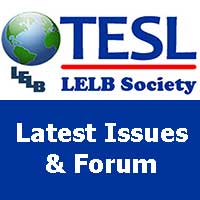Teachability Hypothesis relates to the Chomskian concept of a natural or pre-determined ‘universal’ order for language acquisition.
Teachability Hypothesis
According to Pienemann (1989), the teachability of language is constrained by what the learner is ready to acquire. In terms of grammar, he believes that “every learner builds up his or her own grammar” (p. 53). In teaching settings like the ESL classroom, for most learners, the classroom is just one source of language learning, the other being the “unguided process of natural acquisition” (Pienemann, 1989, p. 53).
According to Pienemann (1989), “You can’t teach everything you want” (p. 57). He further continues that the acquisition process cannot be steered or modeled just according to the requirements or precepts of formal instruction. On the contrary, he argues that teaching per se is subject to some of the constraints which determine the course of natural acquisition.
This is technically referred to as Teachability Hypothesis (Pienemann, 1984). The Teachability Hypothesis predicts that instruction can only promote language acquisition if the interlanguage is close to the point when the structure to be taught is acquired in the natural setting (Pienemann, 1989).
According to Pienemann (1989), formal and natural L2 acquisition could well be different, given, for example, that elements and structures filtered out of formal input cannot be acquired. In addition, there may also be learning strategies which are exclusive to formal acquisition. Therefore, “the Teachability Hypothesis should hold just as well for purely formal contexts as it does for natural ones” (Pienemann, 1989, p. 63).
Pienemann (1989) proposes that second/foreign language learners will not acquire a new structure until they are developmentally ready to do so. If there were no connection between the development of explicit knowledge about a grammar point and the eventual restructuring of the unconscious linguistic system to accommodate the point in the learner’s internal interlanguage, then, indeed grammar instruction would not be of much use. However, it has been suggested that there is a connection, so grammar instruction is ultimately useful. In this response, practice of language points can lead to automatization.
Teachability Hypothesis predicts that instruction can only promote language acquisition if the interlanguage is close to the point when the structure to be taught is acquired in the natural setting so that sufficient processing requirements are developed. So Teachability Hypothesis suggests that instruction does not subvert the natural sequence of acquisition but rather helps to speed up learner’s passage through it (Ellis, 1997).
References
Ellis, R. (1997). Second language acquisition. Oxford: Oxford University Press.
